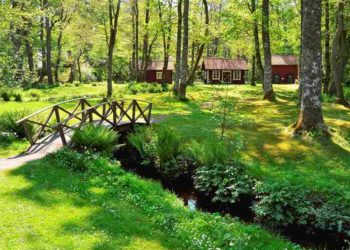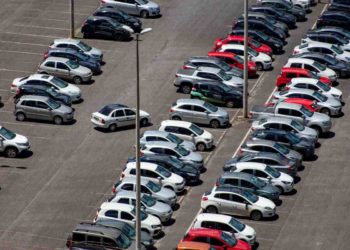Philadelphia is among the oldest towns in the country, and the landmarks and monuments there is evidence of this.
The American Revolution had its beginnings in Philadelphia long before the first musket was fired in Lexington in 1775 when the colonists proclaimed their independence and started preparing for battle.
Philadelphia has contributed significantly to influencing American politics and society from the Revolutionary War to the present. The Museum of the American Revolution, situated in the centre of Philadelphia’s Historic District, provides a comprehensive account of this war that changed the world, making it the ideal place to begin research for visitors eager to learn more about this turbulent period in history.
Numerous significant sites and landmarks are still standing in the area two and a half centuries after the Revolution, providing tourists with an insight into the fascinating tales of this critically significant historical period.
Table of Contents
Here city’s 8 most significant must-see ancient locations are listed below:
1. Congress Hall and Independence Hall
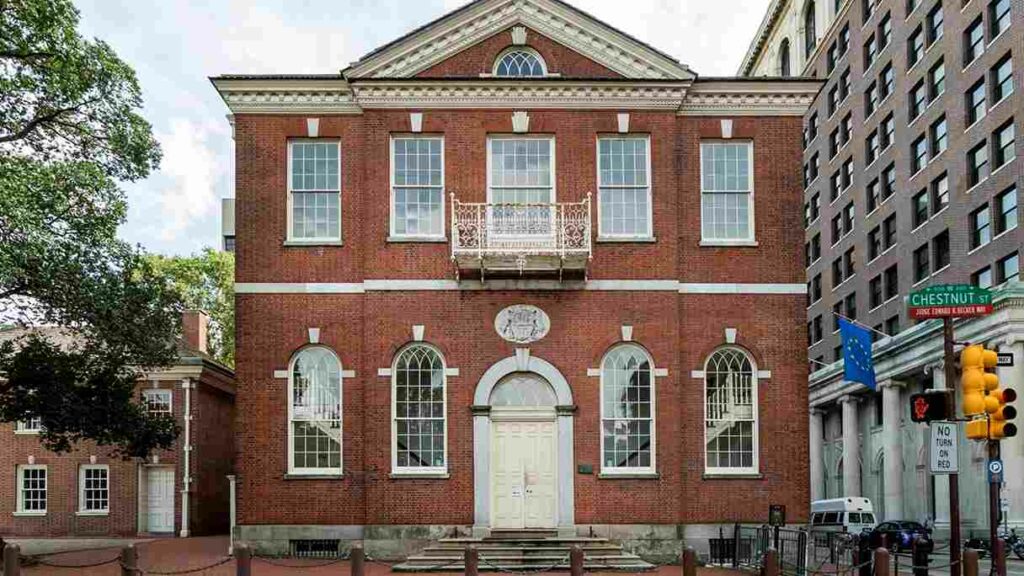
In this significant resting place on Independence Plaza, pivotal events in the formation of our country took place. Visit the Assembly Room, which was set up as it was during the 1787 Constitutional Convention, and then proceed next door to Congress Hall, which housed the U.S. Congress from 1790 to 1800, on a guided walk.
Opening Hours: From March through December, visitors can only enter by taking a park ranger-led walk. Every 20 minutes, tours are offered on a first-come, first-served basis. In January and February, visitors are free to investigate independently.9 a.m. – 5 p.m. is the daily time.
Entry fees: Between March and December, as well as on weekends during the winter holidays, timed entry tickets are needed. Although admission to Independence Hall is free, each appointment costs $1. Under any conditions, refunds are not available. There are no refunds for Independence Hall tickets or costs.
Address: Congress Hall is situated at 6th and Chestnut Streets on Independence Plaza. At Fifth and Chestnut Streets, there is a security screening location for entry.
2. Liberty Bell:
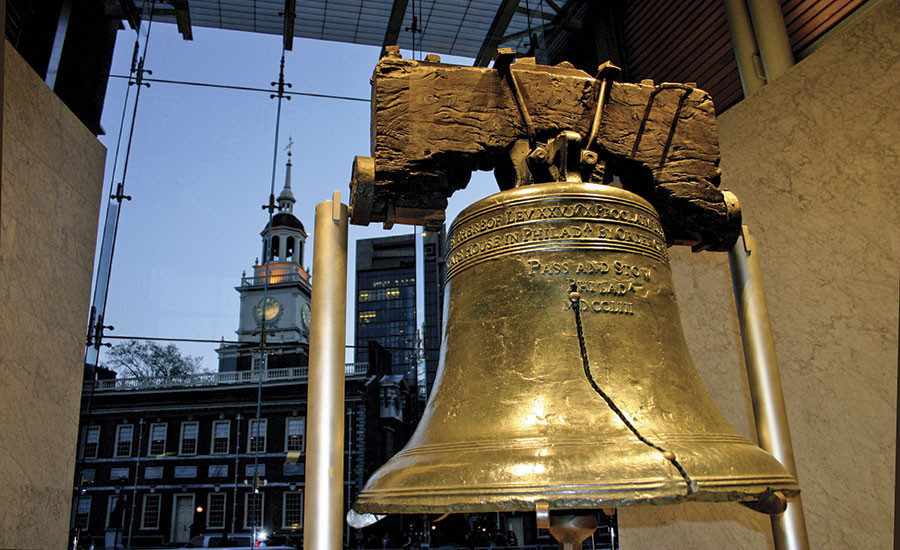
The Liberty Bell, which is located across the street from Independence Hall, is a well-known representation of American independence. It rang to signal the start of the Declaration of Independence reading. The State House, also known as Independence Hall, once housed this renowned bell with a fracture on one side. One of the most well-known representations of early Philly and the American Revolution itself.
Opening time: Hours of Operation and Prices Open every day from 9 am to 5 pm. Ten minutes before the building shuts, the security checkpoint area stops.
Address: 526 Market Street is where you can find the Liberty Bell Museum. Visitors leave the structure from the south end, close to Chestnut Street.
Entrance costs: There are none. Tickets are not necessary. First-come, first-served policy governs entry. Guests must first go through a security checkpoint.
3. National Constitution Center:
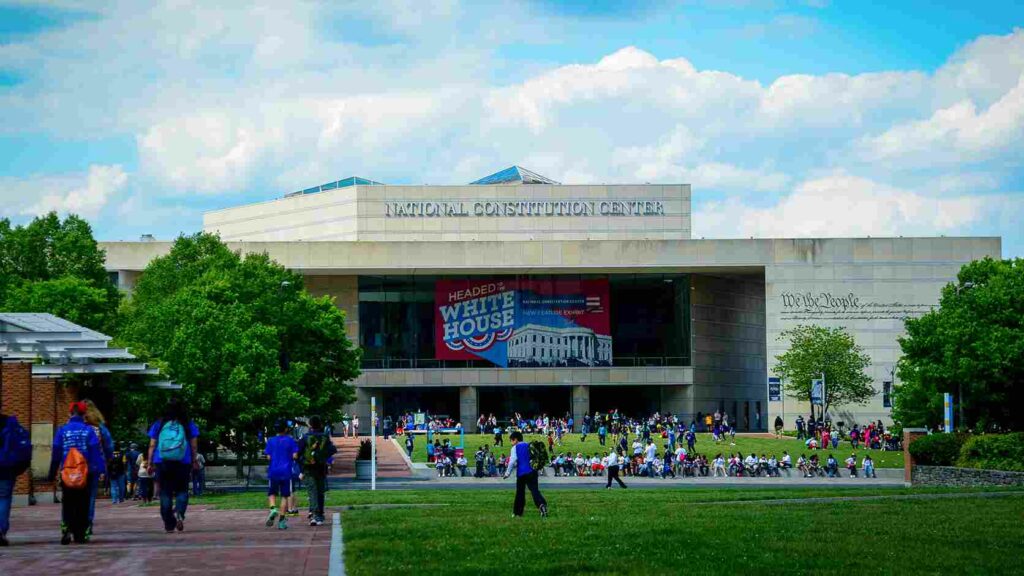
Despite being only four pages long, the United States Constitution is one of the most significant and powerful pieces of writing in human history. Through cutting-edge exhibits, artefacts, and interactive displays, the 160,000-square-foot National Constitution Center delves into every element of this remarkable document, which was drafted just a few blocks away. This Constitution-focused museum offers engaging exhibits, historical artefacts, and instructional activities.
Time of opening: The museum is presently open and running. 10 a.m. to 5 p.m. from Wednesday through Sunday
Address: 525 Arch Street, Philadelphia, Pennsylvania 19106
Entry fees: Visitors can enter for the reduced price of $10 for adults (normally $14.50) and $7.50 for children ages 6 to 18 (typically $11). Starting on January 4, an automatic discount will be given at checkout for those purchasing tickets online only. It is necessary to order tickets in preparation.
4. Philadelphia Museum of Art:
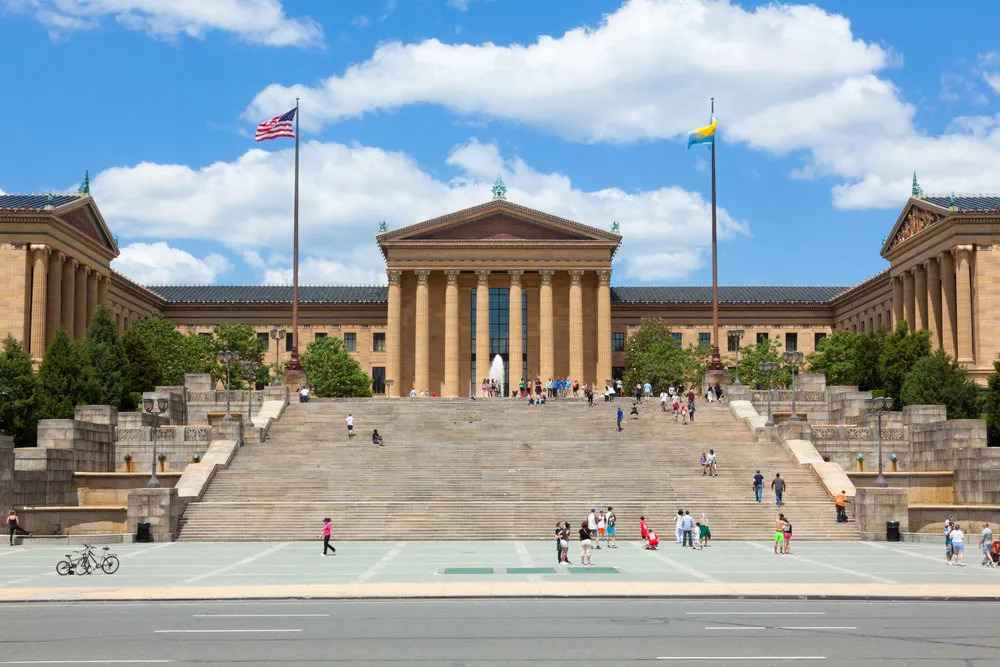
After the city’s renowned Benjamin Franklin Parkway, the iconic Philadelphia Museum of Art is perched majestically on a raise.
One of the biggest art museums in the nation thanks to its extensive collections, this temple of art is a must-visit on any visit to the area. The Philadelphia Museum of Art is home to sizable collections of artwork from all over the world and throughout history, including masterpieces from the Renaissance, America, East and South Asia, Impressionism, and modern periods.
This museum, made popular by the “Rocky Steps,” has a huge collection of artwork from all over the globe.
Opening time: Typical hours of operation for the Philadelphia Museum of Art are Thursday through Monday, 10:00 AM to 5:00 PM. In addition to important holidays like Thanksgiving Day, Christmas Day, and New Year’s Day, the museum is closed on Tuesdays and Wednesdays.
Address: In Philadelphia, Pennsylvania, 19130, at 2600 Benjamin Franklin Parkway.
Entry fees: There is a general charge of $25 for adults, $23 for seniors, and $14 for students with proper identification, and there are no entry fees for those under 18 years old.
5. Rittenhouse Square:
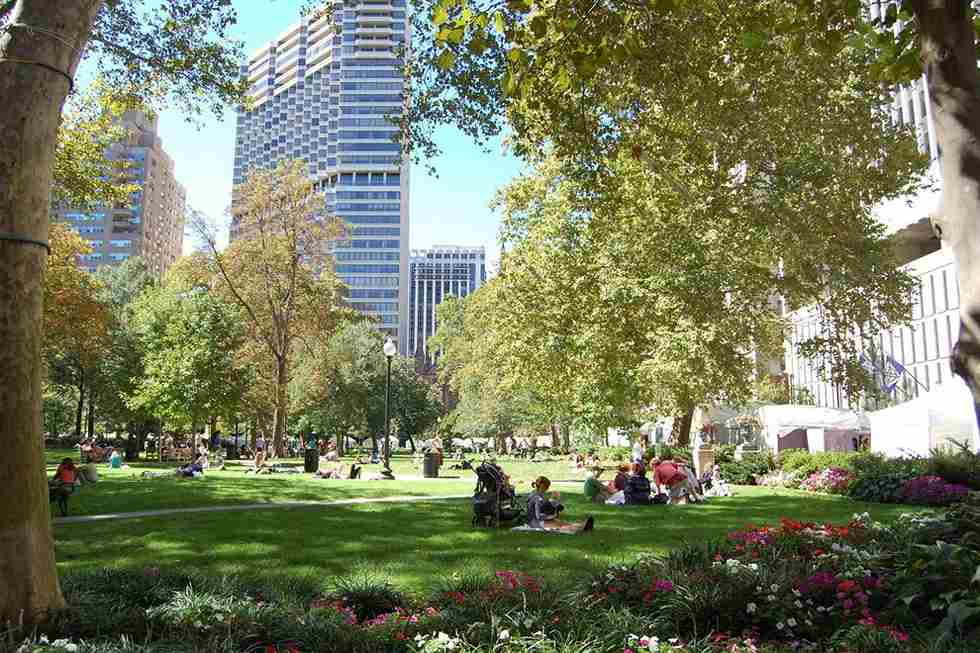
In the centre of the Center City of Philadelphia, Rittenhouse Square is a storied public space. The park was established more than a century ago and is named after David Rittenhouse, a renowned scientist, and clockmaker who resided in the city during the 18th century.
High-end eateries, shops, and cafes surround the park, making it a fantastic spot to pause and unwind after a day of sightseeing or shopping. The park holds a lot of festivals and events throughout the summer, such as outdoor concerts, art exhibitions, and farmers’ markets. Philadelphia’s Rittenhouse Square is a charming and energetic location that provides a tranquil retreat amidst the busy downtown.
Available time: The shop is available every day of the year.
Address: 1800 Walnut Street, Philadelphia, Pennsylvania 19103
Entrance fees: There are no entrance fees or admission costs to enter the area. It is accessible to everyone all year long.
6. The President’s House:
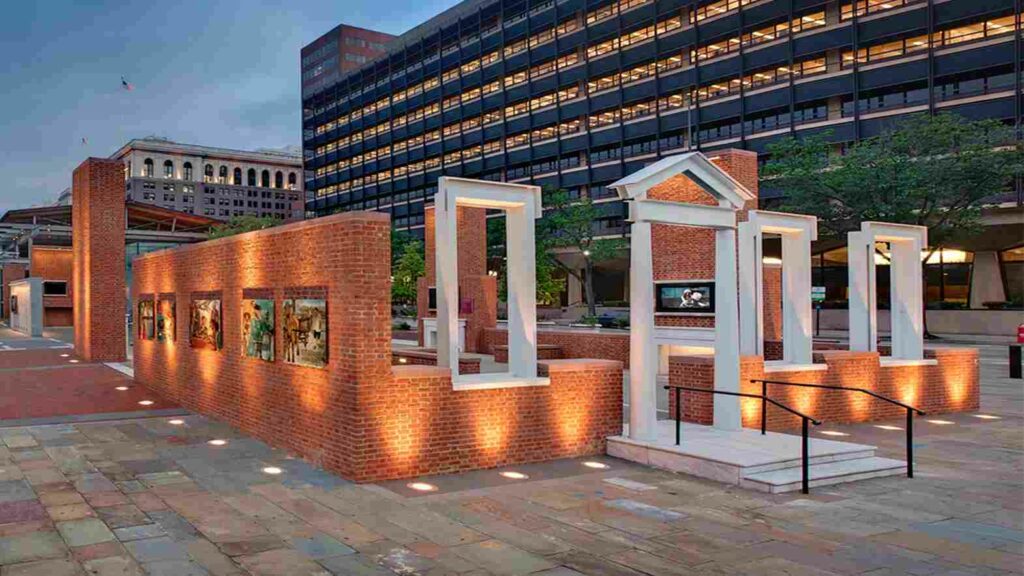
The President’s House in Philadelphia served as the President of the United States’ formal residence from 1790 to 1800 while Philadelphia served as the nation’s capital. The President’s House, which is situated on Independence Mall, was initially constructed in the 1760s as the residence of a prosperous merchant and slaveowner Robert Morris. In 1790, Morris leased the property to the federal govt for use as the White House.
The President’s House is now a historical landmark and museum whose mission is to preserve the narrative of the building and the enslaved people who once resided and worked there. A glimpse into day-to-day life at the President’s House in the late 18th century is provided by the museum’s interactive displays, multimedia installations, and archaeological relics.
Opening time: Year-round hours of operation are from 7 a.m. to 10 p.m. every day.
Address: The President’s Mansion Site is situated at the intersection of Market and 6th Streets. You can access this outdoor display from either Market Street as well as 6th Street.
Entrance costs: There are none.
7. Valley Forge National Historical Park:
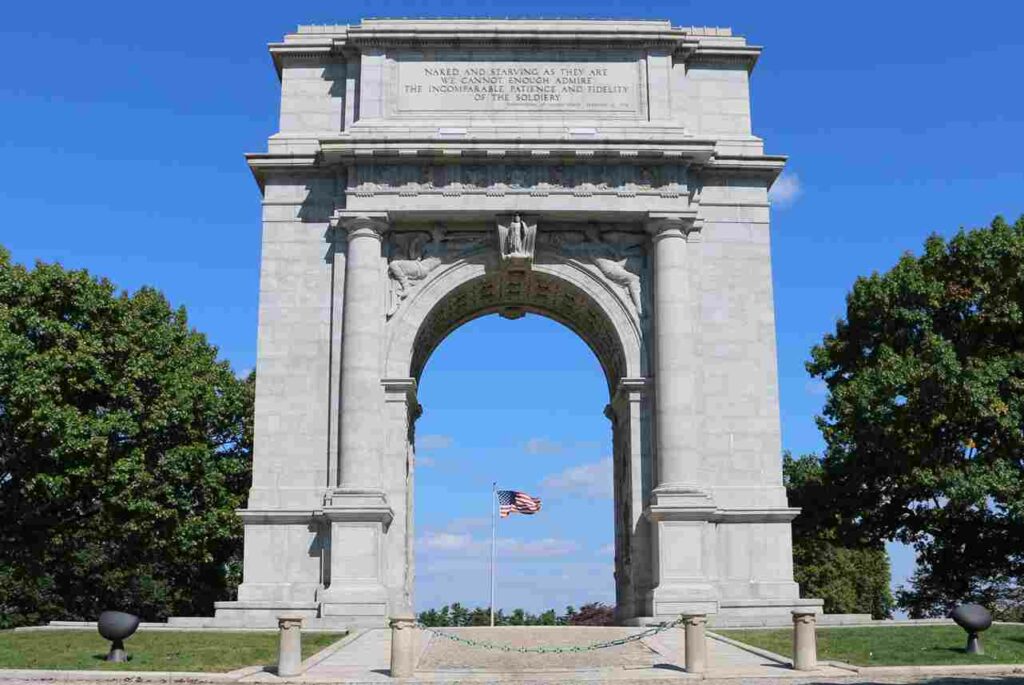
From December 19, 1777, to June 19, 1778, Valley Forge National Historical Park served as the location of the Continental Army’s third winter garrison. The Valley Forge encampment’s past is explained and the site is preserved by the National Park Service.
Visitors can now explore the encampment’s location and discover more about the American Revolution’s past at Valley Forge National Historical Park. Along with several historical sites and monuments, such as reconstructed soldier huts, the Valley Forge Memorial Arch, as well as the Washington Memorial Chapel, the park has miles of hiking and biking paths.
Valley Forge National Historical Park is a well-liked location for outdoor recreation in addition to its historical landmarks.
Address: 1400 North Outer Line Drive, King of Prussia, Pennsylvania 19406
Opening time: Operating hours are from 9 a.m. to 5 p.m.
Entry fees: No entry costs are required.
8. Museum of the American Revolution:
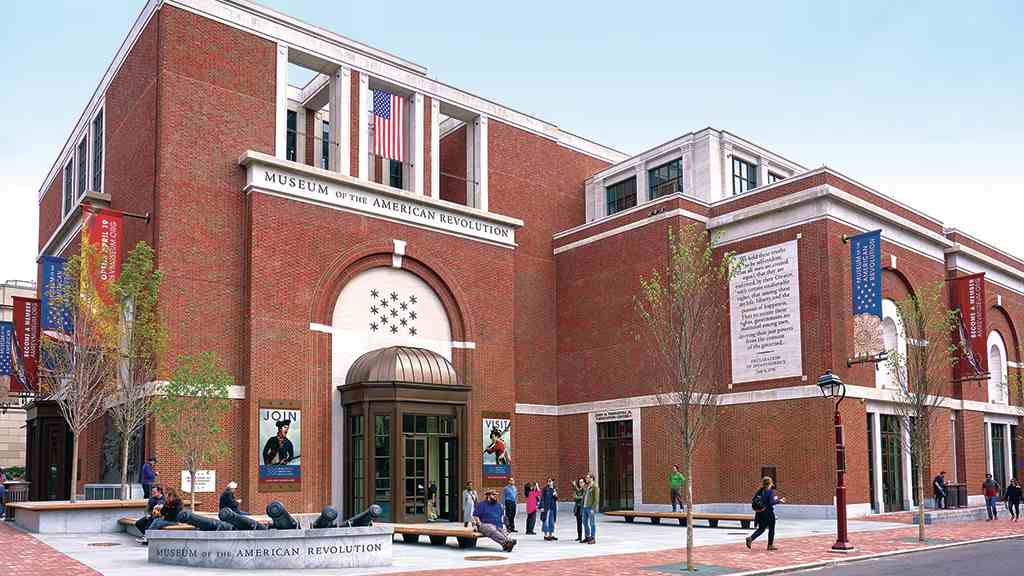
Philadelphia is a must-see for anyone wanting to learn about the foundation of America while travelling in the United States. However, this museum tells the tale of America and the development of the colonies into a single country in incredibly descriptive displays. Visiting historical sites undoubtedly provides a sense of history. The museum’s displays address a variety of subjects related to the American Revolution, such as the circumstances that led up to the conflict, the military tactics and engagements, the roles played by women and other minorities, and the revolution’s effects on American politics and society. The actual tent that George Washington slept in during the conflict, a recreation of a camp for Continental Army soldiers, and other items are among the museum’s highlights.
Opening time: Everyday hours of operation are 10 a.m. to 5 p.m. Thanksgiving Day, Christmas Day, New Year’s Day, and Voting Day are all days the museum is closed.
Address: Philadelphia, Pennsylvania 19106 101 S 3rd St.
Entry fees: I would advise speaking with the ticket booths to get precise rates because there are so many combination family pack options.
Conclusion
Philadelphia is a historically rich city that provides tourists with a window into the past of the nation through its many historic sites. Philadelphia’s historic sites have something for everyone, from Independence Hall as well as the Liberty Bell, which was important in the founding of the country, to museums like the Museum of the American Revolution as well as the National Constitution Center, which also explore the intricacies of American history and government.
Ultimately, Philadelphia’s historic sites provide a wealth of chances for visitors to engage with American history and learn more about the people and events that have shaped the country.





